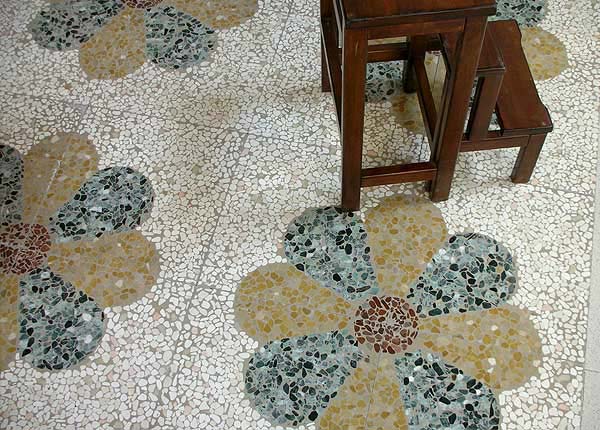Romanorum opus musivum
In Olympia the “pronaos” of the classic temple (465 BC) has a floor decorated with brook stones, a sort of “Venetian terrace”.
It is attributed to the first Roman age. This Greek procedure where the floors were cemented with lime was perfected in Italy. With the evolution of these “patient works of art” over the centuries, we have learned that they are not and can never be “a picture for eternity” even though some of the works by the hard stone mill in Florence are so sophisticated that they come very close to interpreting the pictorial order.
The floor compositions of the IX century take on a decorative role, perfect for these stupendous floors. “Rustic” mosaic used from the XVI to the XVII century was also formed on gravel reliefs and had its precedents in the classic decoration of nymphaeums and fountains. The juxtaposition of coloured stones to make ornaments seems to be timeless; Grandinetti, true to style, studies the past in depth making the historical conquests of master floor makers its own and bringing them back in an evolutionary sense. The Grandinetti floor shown here is “unusual” in its arrangement and gives added value to any type of furnishing, be it minimalist or antique, sober or modern.

Romanorum opus musivum, Art. OMA6.
Size
- 40x40x2 weight 50 kg/mq
- 60x60x2 weight 50 kg/mq
- Slabs 245×125 cm
Finishes
- Polished and bevelled
- Antique
- Honed and bevelled
- Heavy brushed (R10)



















